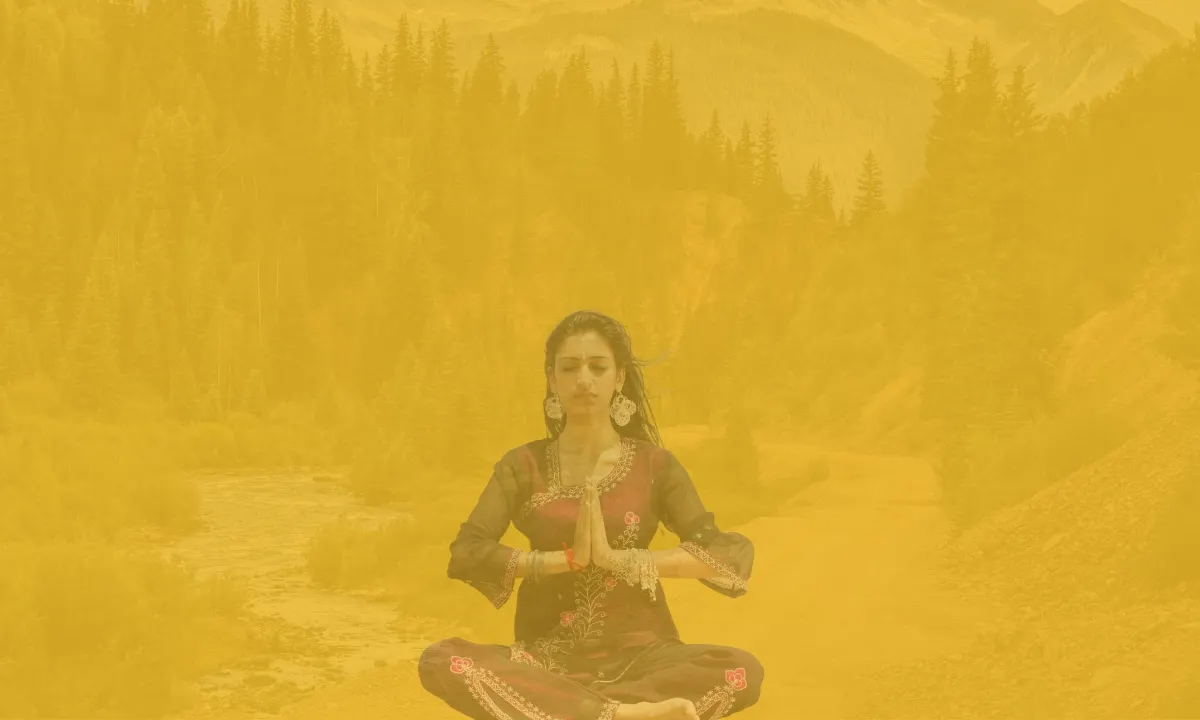Breathing As Ritual Practice
Breathing as a ritual practice has an important place in anthropology. One of the classic examples is Yoga.

Breathing as ritual practice has an important place in anthropology. The focus is on socially and culturally embedded, symbolic, practical, and sociopolitical uses of breath in rituals or ceremonies. These, in turn, express and reinforce beliefs, identities, imaginations and social structures. One of the classic examples is Yoga.
Yoga originated historically as a school of Hinduism as one of six classical philosophical systems (darshana). This is a school that focused on discipline, meditation, and ethical living to achieve spiritual liberation (moksha). Rooted in Patanjali's “Yoga Sutras,” the Yoga school outlined an eightfold path (Ashtanga Yoga) integrating physical, mental, and spiritual practices to quiet the body-mind and realize the self.
In Yoga, breathing as a ritual practice is supposed to be an integral part of everything. There are several unique aspects of this, such as using the breath (pranayama) as a sacred, intentional act that connects body, mind, and spirit. More than a technique, breathing becomes a devotional offering in such ritual settings.
Of course, Yoga as a school is and could be more than the fitness oriented postures popular in Western societies and across the planet; it’s embodied as a denomination of a major religion but also as Postsecular spiritual practice, and potentially politically constraining or liberating practice. As a result, this article focuses on Yoga as a spiritual and biopolitical tradition in relation to breathing.
Yoga Schools of Thought
Within the Yoga school of Hinduism, several major paths or sub-schools developed. Over the centuries, each of them began to focus on different aspects of practice.
Raja Yoga, for example, is based on Patanjali's “Yoga Sutras.” This school focuses on meditation and mental discipline through the eightfold path.
On the other hand, Hatha Yoga is more about physical postures (asanas), breath control (pranayama), and purification techniques. Its practices are to prepare the body for meditation.
Meanwhile, Jnana Yoga is another major school. Jnana Yoga centers on knowledge and self-inquiry. The goal is to realize the true self. Bhakti Yoga is another major school. This popular school stresses devotion to a personal deity.
And, of course, there is Karma Yoga. This school focuses on selfless action without attachment to results.
Though diverse in method, all have a goal toward spiritual liberation (moksha) and inner transformation.
Breathing in Yoga
For most Yoga schools breath is an extremely important aspect of Puja, or worship. Therefore, each inhalation symbolizes receiving divine energy from the universe and each exhale releases "impurities" arising from the self-centered ego.
Practiced with vocalization (mantra), visualizations, or hand gestures (mudra), breath is a powerful tool for presence and inner transformation across Yoga schools.
Rooted in traditions like Yoga, ritualized breathwork works as a daily discipline. The discipline has multiple facets that purifies, centers, and awakens.
That is, Yoga transforms ordinary breathing into a mindful, spiritual practice aligned with deeper awareness and self-realization.
Yoga, Anthropology, and Social Sciences
Anthropologists can learn a lot about the Yoga schools. For example, that breathing is not merely physiological but deeply symbolic, spiritual, sociocultural, and political.
Breath (prana) is considered life-force energy, and its regulation through pranayama reflects broader beliefs about the body, mind, and cosmos.
Studying these practices gives us a chance to learn how breath embodies values. Some of the major values that we know through research is discipline, purification, and self-transcendence.
Research has also shown us how Yoga contributes beyond its spiritual space. Sreenath Nair (2024) highlights how Konstantin Stanislavski, the Russian theatre practitioner, was influenced by Yoga and Eastern spirituality to integrate yogic breathing and the concept of prana into acting, using breath as a tool to access a creative, spiritual state that unites body, mind, and non-verbal energy in performance.
Pallabi Chakravorty (Yervasi, 2019) presents Yoga as a disciplined, physical practice. Chakravorty argues that conscious breath is essential to accessing postures, highlighting how breath functions as both a force of alignment and a bridge between artistic expression and embodied healing in a global, intercultural context.
Breathing rituals also reflect social and religious structures, such as teacher-student relationships, gender norms, and ritual transformation. This is an area that requires more research.
Anthropologists may gain insights into embodied religion, social and cultural constructions of wellbeing, and the global transmission and adaptation of ancient Indian spiritual traditions by analyzing how practitioners experience, teach, and ritualize breath.
While doing so, anthropologists and social scientists also offer valuable instructions about how to pay attention to the political and economic mobilization of Yoga. We need to be mindful if and how Yoga is abused as an oppressive, casteist tool to spread the ideology of Hindutva or Hindu Supremacy in India (and elsewhere), as Bhuvi Gupta and Jacob Copeman recently argued (2020).
Like all traditions, Yoga based breath work practice also must be decolonized and attend to intersectional politics, as Farah Godrej reminds us about the sociopolitical implications of Yoga (2017).
Anthropologists and social scientists direct our attention to the sociopolitical dangers of Yoga being commercialized as an object of predatory cultural appropriation by white privileged actors in the West, and transfigured into neoliberal self-centered well-being practice by elite practitioners at the cost of Yoga's potentials to free us from inner and outer oppression through breathwork and other tools of transformation.
Thus, instead of claiming historical authenticity and aiming for absolute purity, Yoga can offer a decolonized, intersectional, justice-based liberatory breathwork practice in contemporary suffocating times.
Dr. Nasima Selim is an interdisciplinary scholar trained in medicine, public health and anthropology. She is a breathworker, writer, researcher, and educator. Her books include “Breathing Hearts” (Berghahn 2024), an open-access ethnography, and "Ways of Breathing and Knowing" (Routledge, forthcoming), a volume of 12 interdisciplinary essays she co-edited with Dr. Judith Albrecht.
© NasimaSelim.com - All rights reserved.